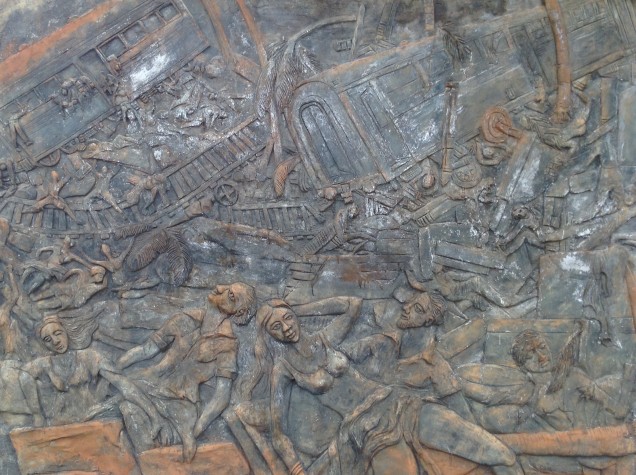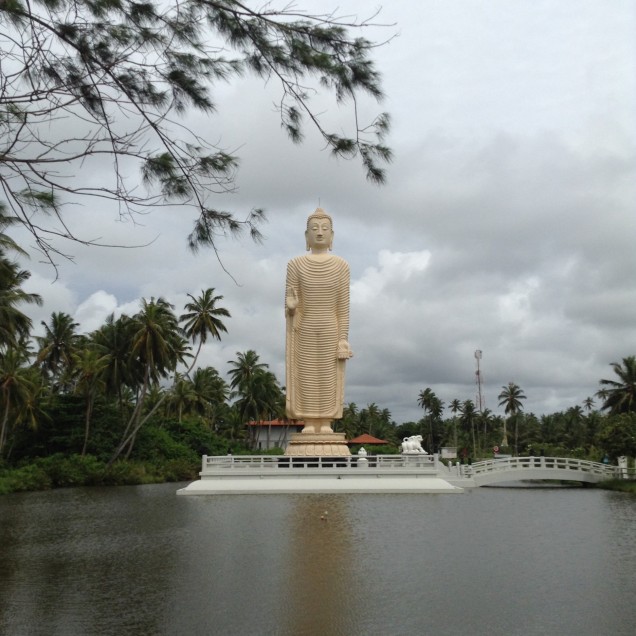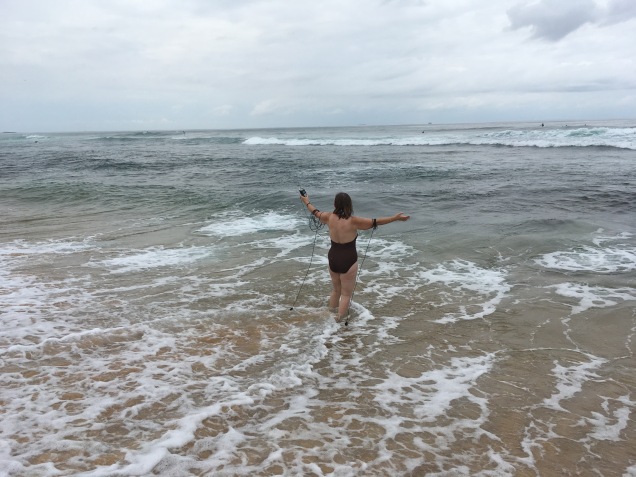A week ago I was waking up in Frome and getting ready to make the journey to Sri Lanka. Now, only one week later, that feels like a world away. Although I felt a bit lost and jet lagged in the first few days, I think I’m beginning to find a kind of balance and a new way of working in a new place.
My aim during this residency is to collect material for and start to write a piece of music which expresses my grief at the loss of my parents (2010 and 2017) and in some way makes a link with universal feelings of loss and absence. At the moment I’m thinking of it as a kind of requiem. My hope is that, like my work with Alastair Goolden for In the Field (Artmusic, Wadhurst 2014-15), it will result in both a choral work and a sound installation.
The first few days in Hikkaduwa were spent aclimatising and making preliminary visits to places and institutions that we might want to explore further or work with during our stay. We visited the Tsunami Museum in Peraliya, a village just to the north of Hikkaduwa. The museum is in a private house with several rooms full of photos documenting the chain of events of 26th December 2004 starting with the earthquake under the Indian Ocean near the West coast of Sumatra. The numbers of people who lost their lives here is shocking. The catastrophic train accident where more than 1500 passengers lost their lives (considered the most ttragic train accident in world history) also happened very near the Tsunami Museum.
There are two physical memorials to the Tsunami near the museum. At the site af a mass grave is a carved relief showing the devastation, including images of the train crash and along the road is a massive standing Buddha donated by the people of Japan. The Buddha is 18 metres high – the height of the tsunami wave that hit this part of the coast.


Since that first day in Hikkaduwa several people I have met in shops have offered their tsunami stories, so although it was 13 years ago and lives and businesses have been rebuilt the memory is not far from the surface. I want to interview local people about how they and their families were affected but it’s hard to know what kind of questions are acceptable to ask.
Also on that first tour around the area our tuk-tuk driver pointed out white flags and banners above the street and outside a house. These mark the route to the house of someone who has recently died and will also mark the route of the funeral procession. The banners over the road bear the words ‘All conditioned things have the nature of decay’ White is worn for funerals : white sarongs and shirts for men and white sarees for women. White features in other funeral rituals too – a white cloth is presented to the monks who officiate; presents of milk powder and sugar are offered; a white parasol is carried over the coffin during the procession and grains of puffed rice are thrown.
Impermanent are conditioned things; it is their nature to arise and fall; having arisen they cease; their complete stilling is happiness.
The following day we were at the corner of the same street when the funeral procession came past. Drums and horanawa (sri lankan oboe) accommpanied the procession and the mourners formed a wailing chain holding on to the white funeral car and each other.
The task of composing without a piano was always going to be the biggest challenge of my residency. I have brought a selection of things with me to allow alternative ways of assembling, devising and playing back sound – my Zoom H4n hendheld recorder, a stereo pair of hydrophones and some miniature loudspeakers. I’ve also brought a make-your-own musical box roll device. I ordered this online about ten years ago and haven’t so far found the opportunity to use it. I think it is going to be just the thing for composing miniature wave pieces. Since arriving in Hikkaduwa I’ve also aquired a traditional wooden flute and a bell from Lal at the Elephant Foot drum shop.
Yesterday I recorded the sound of the waves crashing on the beach a few yards from the hotel and today I took my hydrophones for their first outing and recorded the sounds under the waves. Thanks to Lorna Rees and Kyna Hodges for their photographs.




Sterling work – sounds like you have your direction and oodles of material. Go girl!
LikeLike
the musical box looks intriguing,can’t wait to hear it x
LikeLike